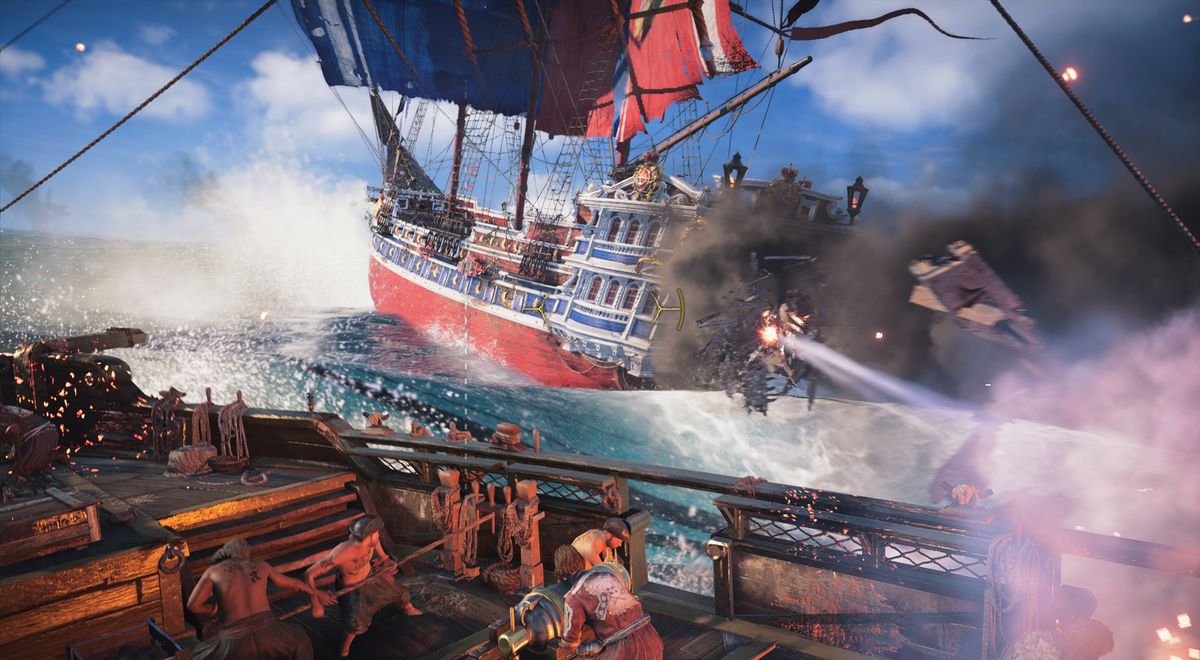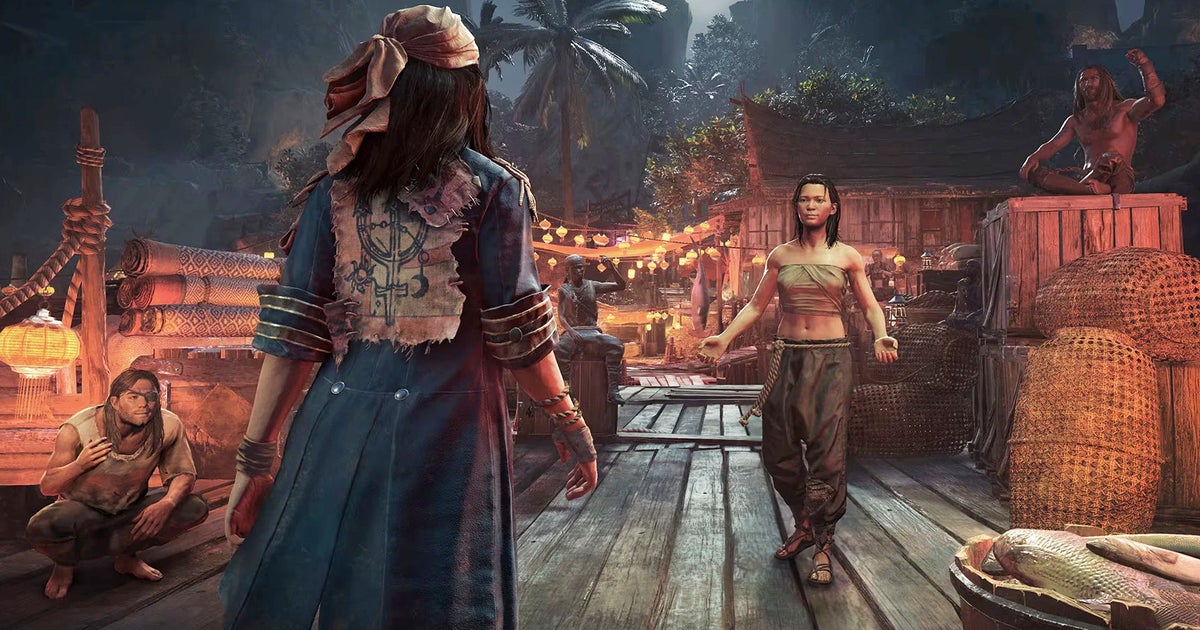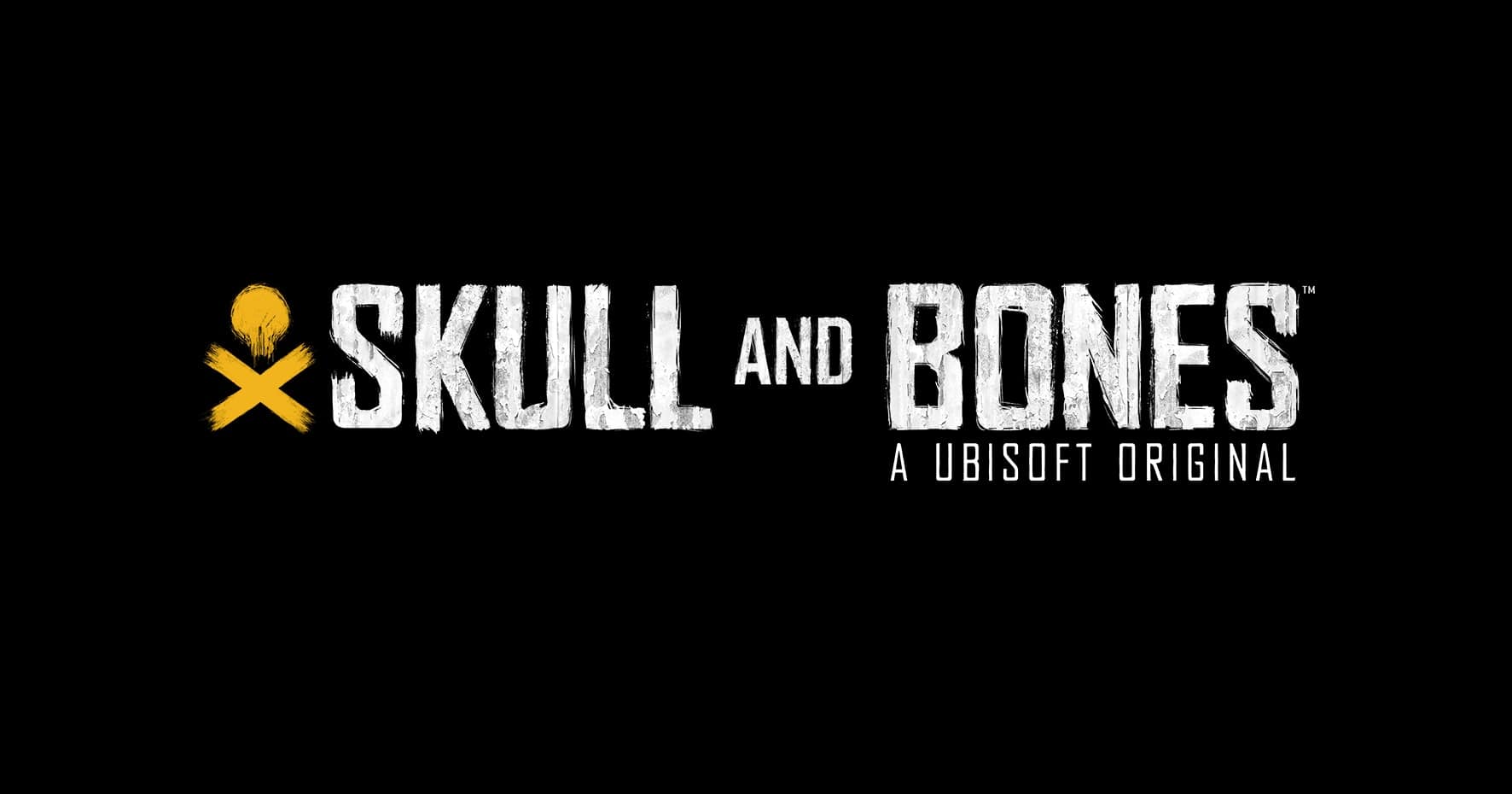Skull and Bones, Ubisoft’s pirate adventure that has finally made its debut after numerous delays and conceptual changes. As we go through the seas of the 17th-century Indian Ocean, we’ll uncover the highs and lows of this title, exploring its gameplay, world, and the rocky shores of its live-service model.

Also Read: Banishers: Ghosts of New Eden Review
Skull and Bones sets sail with a focused premise: the allure of being a pirate on the high seas. From the outset, it beckons players to see the fantasy of commanding a mighty vessel, plundering riches, and engaging in naval battles.
However, beneath its exterior lies a complex web of mechanics and systems, each vying for attention in this vast oceanic playground.
Skull and Bones revolves around naval combat and exploration. Players assume the role of a pirate captain, navigating their ship through a beautifully rendered open world filled with islands, trade routes, and rival vessels.
The combat mechanics, inherited from Assassin’s Creed: Black Flag, offer a thrilling of strategy and action, as players must outmaneuver and outgun their adversaries to emerge victorious.
While Skull and Bones excels in delivering adrenaline-fueled naval encounters, its narrative framework feels disappointingly shallow.
The storyline, centered around two major NPCs, lacks the depth expected of a pirate tale. Dialogues with these characters feel perfunctory, as conduits for gameplay progression rather than engaging narratives in their own right.
The absence of meaningful player choices or consequences detracts from the storytelling experience, leaving players adrift in a sea of missed opportunities.
Also Read: Disney Invests $1.5 Billion in Fortnite Maker Epic Games
Engaging enemy vessels requires skillful maneuvering, strategic positioning, and precise timing. Whether facing off against AI-controlled ships or engaging in PvP encounters, every skirmish feels rewarding.
The variety of weapons and ship customization options allow players to tailor their vessels to suit their playstyle. While the combat mechanics shine, Skull and Bones falters in other areas.
The game’s progression system relies heavily on mechanics, requiring players to invest time and effort to unlock new upgrades and abilities. This repetitive tasks and resource gathering can feel detracts from the overall enjoyment of the game.
One of Skull and Bones’ major shortcomings lies in its narrative execution. Despite the rich setting for compelling storytelling, the game fails to deliver an engaging narrative experience.
Characters lack depth and development, and quest objectives often feel disconnected from the overarching plot.
Also Read: Elden Ring Mobile Game is Reportedly in the Development at Tencent
While there are moments of excitement, they are overshadowed by a lack of meaningful storytelling and character interaction.
As a live service game, Skull and Bones plans to provide ongoing content updates and support long-term player engagement.
The introduction of endgame activities, such as PvP events and economic management mechanics, offers incentives for continued play. However, technical issues and gameplay imbalances mar the experience, hindering the game’s appeal.
The live-service model, touted as a cornerstone of the game’s design, introduces players to a revolving door of activities, events, and rewards.
Yet, beneath the surface, cracks begin to emerge. Issues of repetitiveness, grindiness, and technical instability plague the endgame experience, dampening the excitement of progression and exploration.
Skull and Bones faces criticism from both players and critics alike. Complaints range from underwhelming gameplay mechanics to technical issues and a lack of compelling content.
Many players draw unfavorable comparisons to other titles in the genre, such as Sea of Thieves and Assassin’s Creed: Black Flag.
Also Read: Sony Announces PlayStation State of Play for 2024





















